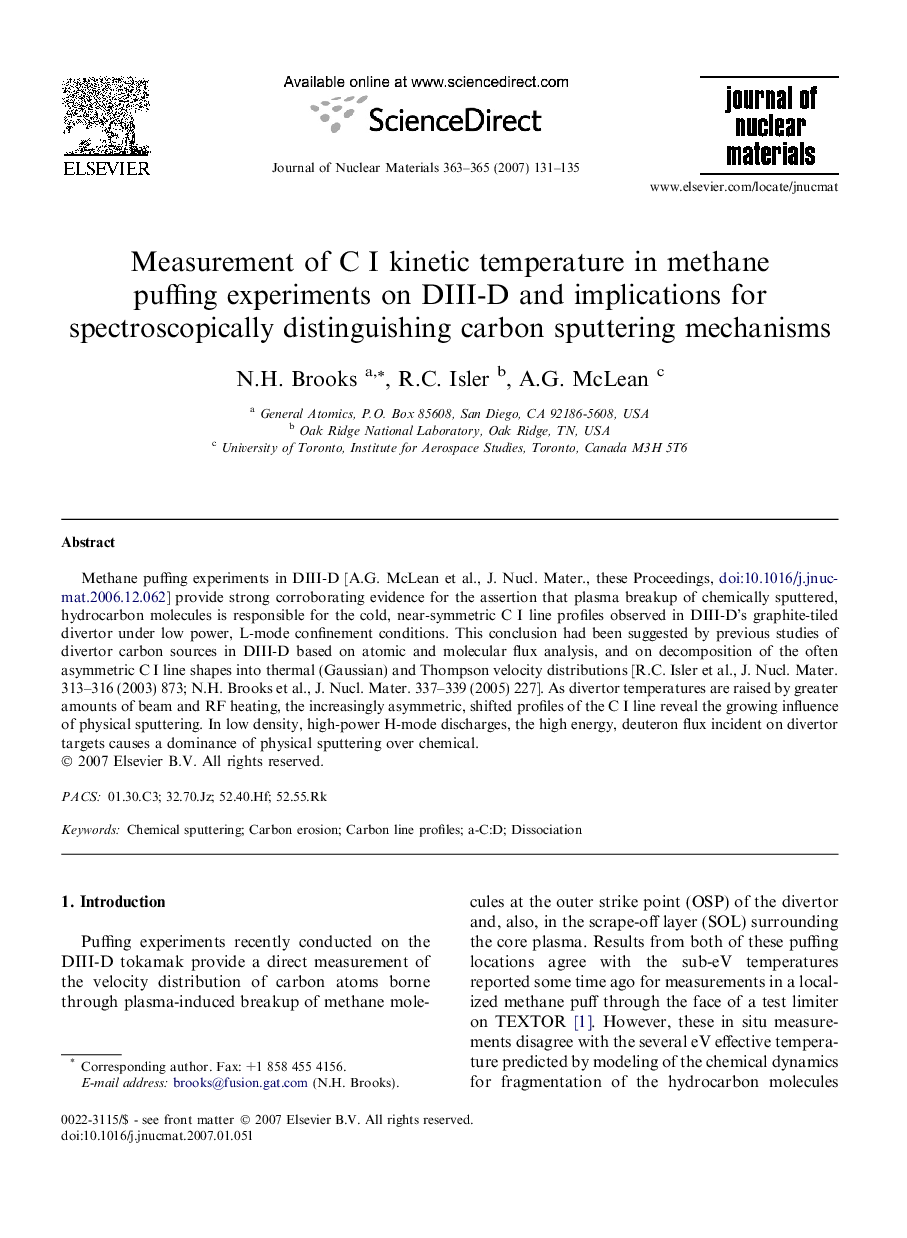| Article ID | Journal | Published Year | Pages | File Type |
|---|---|---|---|---|
| 1569165 | Journal of Nuclear Materials | 2007 | 5 Pages |
Methane puffing experiments in DIII-D [A.G. McLean et al., J. Nucl. Mater., these Proceedings, doi:10.1016/j.jnucmat.2006.12.062] provide strong corroborating evidence for the assertion that plasma breakup of chemically sputtered, hydrocarbon molecules is responsible for the cold, near-symmetric C I line profiles observed in DIII-D’s graphite-tiled divertor under low power, L-mode confinement conditions. This conclusion had been suggested by previous studies of divertor carbon sources in DIII-D based on atomic and molecular flux analysis, and on decomposition of the often asymmetric C I line shapes into thermal (Gaussian) and Thompson velocity distributions [R.C. Isler et al., J. Nucl. Mater. 313–316 (2003) 873; N.H. Brooks et al., J. Nucl. Mater. 337–339 (2005) 227]. As divertor temperatures are raised by greater amounts of beam and RF heating, the increasingly asymmetric, shifted profiles of the C I line reveal the growing influence of physical sputtering. In low density, high-power H-mode discharges, the high energy, deuteron flux incident on divertor targets causes a dominance of physical sputtering over chemical.
